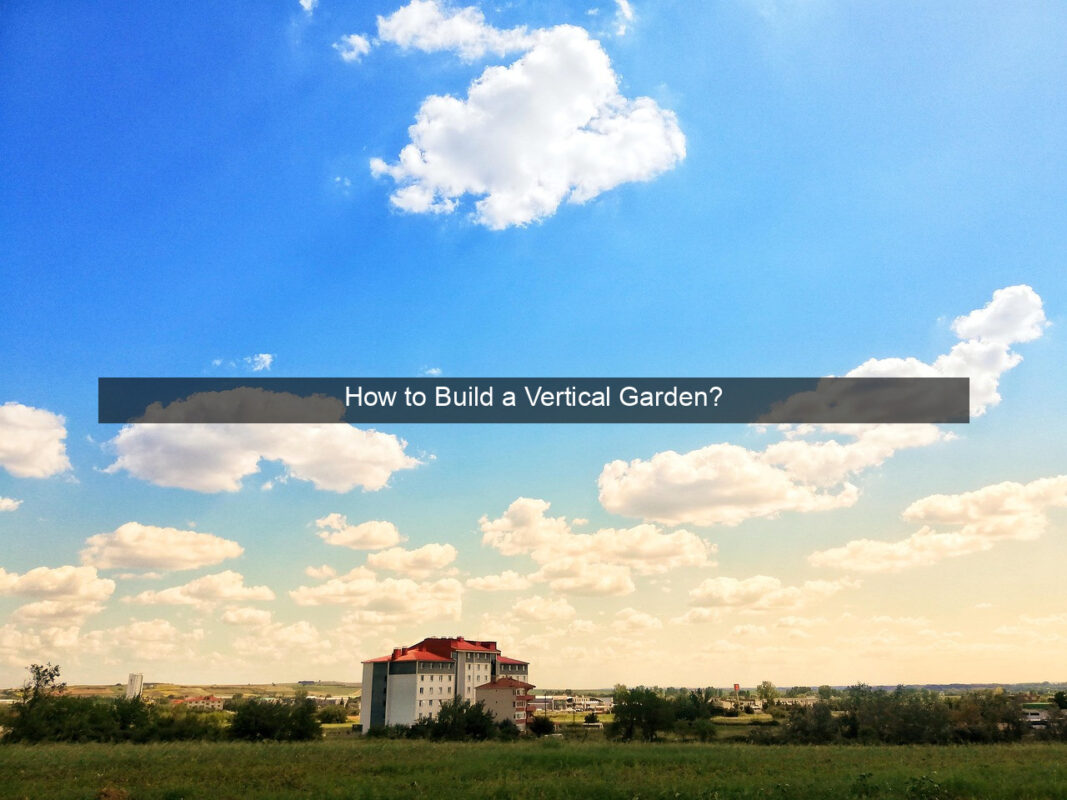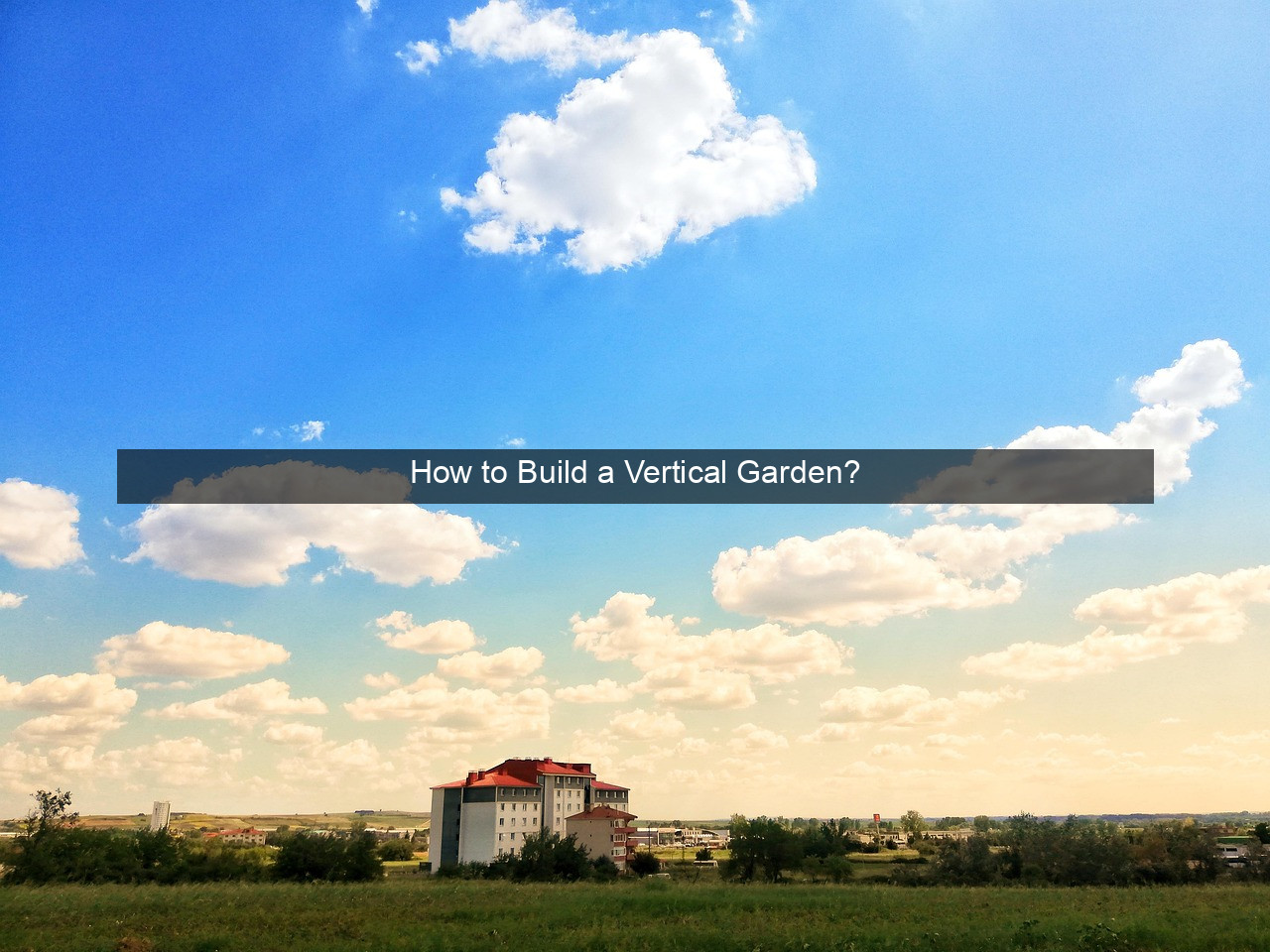How to Build a Vertical Garden?

- How to Build a Vertical Garden?
- Planning Your Vertical Garden
- Choosing the Right Location
- Selecting the Right Plants
- Building the Vertical Garden Structure
- Planting and Maintaining Your Vertical Garden
- Planting Your Vertical Garden
- Watering and Fertilizing
- Pruning and Maintenance
- Choosing the Right System for Your Needs
- DIY vs. Pre-made Systems
- Different Vertical Garden Systems
- Conclusion

Imagine transforming a dull, lifeless wall into a vibrant, thriving ecosystem. Vertical gardens offer a stunning way to bring nature indoors or enhance outdoor spaces, even with limited square footage. They’re not just aesthetically pleasing; they also purify the air, reduce noise pollution, and can even help insulate your home. Whether you’re a seasoned gardener or just starting out, building your own vertical garden is a rewarding and surprisingly achievable project. This guide will equip you with the knowledge and steps needed to cultivate your own vertical paradise, from choosing the right plants to maintaining a flourishing green wall. Prepare to be inspired and learn how to transform your space with the beauty and benefits of a vertical garden. From simple DIY projects to more complex installations, we’ll cover everything you need to know to get started. Let’s dive into the world of vertical gardening and unlock the potential of your walls.

Planning Your Vertical Garden
Choosing the Right Location
Selecting the perfect spot for your vertical garden is crucial for its success. Consider the amount of sunlight the area receives. Some plants thrive in full sun, while others prefer shade. Also, think about accessibility for watering and maintenance. A location near a water source will make upkeep much easier.
Evaluate the structural integrity of the wall or support you plan to use. Ensure it can handle the weight of the plants, soil, and water. If necessary, reinforce the structure before beginning your installation. Proper planning in this stage will prevent future problems.
Finally, consider the aesthetics of the location. How will the vertical garden complement the surrounding environment? Visualize the final product and choose a spot where it will enhance the overall look and feel of your space.
Selecting the Right Plants
Choosing appropriate plants is essential for a thriving vertical garden. Consider the climate and the specific conditions of your chosen location. Select plants that are well-suited to the amount of sunlight, shade, and humidity they will receive.
Think about the growth habits of the plants. Some plants will cascade downwards, while others grow upwards. A mix of textures and colors can create a visually appealing display. Research different plant varieties and choose those that complement each other.
Consider the maintenance requirements of the plants. Some plants need more frequent watering or fertilizing than others. Choose plants that fit your lifestyle and gardening experience. Low-maintenance options are ideal for beginners.
Building the Vertical Garden Structure
There are various methods for constructing a vertical garden structure, from simple DIY projects to more complex systems. A popular option is using repurposed pallets. Simply attach landscape fabric to the back and sides to create pockets for planting.
Another option is using hanging planters or wall-mounted pockets. These are readily available at most garden centers and offer a quick and easy way to get started. They are also ideal for smaller spaces or for creating a more modular design.
For a more sophisticated setup, consider a modular system with built-in irrigation. These systems can be more expensive but offer greater control over watering and nutrient delivery, leading to healthier and more vibrant plants.
Planting and Maintaining Your Vertical Garden
Planting Your Vertical Garden
Once your structure is ready, it’s time to start planting! Begin by preparing your chosen growing medium. A mix of potting soil, perlite, and peat moss is a good option for most vertical gardens. This blend provides adequate drainage and aeration for healthy root growth.
Carefully place your plants into the designated pockets or containers, ensuring their roots are well-covered with the growing medium. Gently firm the soil around the base of each plant to secure it in place. Avoid overcrowding the plants, allowing sufficient space for growth.
After planting, water thoroughly to settle the soil and hydrate the plants. Add a slow-release fertilizer to provide essential nutrients for initial growth. Monitor the moisture levels regularly, especially during the first few weeks, and adjust watering accordingly.
Watering and Fertilizing
Maintaining proper hydration is crucial for the health of your vertical garden. Depending on the climate and plant types, you may need to water daily, especially during hot and dry periods. A drip irrigation system can automate this process and ensure consistent moisture.
Regular fertilization provides essential nutrients for continued growth and vibrant blooms. Use a balanced liquid fertilizer diluted to half strength every two to four weeks during the growing season. Avoid over-fertilizing, as this can damage the plants.
Monitor the plants regularly for signs of stress, such as wilting or yellowing leaves. Adjust your watering and fertilizing schedule as needed. Promptly address any pest or disease issues to prevent them from spreading.
Pruning and Maintenance
Regular pruning helps maintain the shape and size of your vertical garden and promotes healthy growth. Remove any dead, damaged, or diseased leaves and stems. Trim back overgrown plants to prevent them from encroaching on neighboring plants.
Inspect the structure periodically for any signs of wear and tear. Repair or replace any damaged components to ensure the stability and longevity of your vertical garden. Tighten loose screws or replace worn-out parts as needed.
Repot or replace plants as necessary. Over time, some plants may outgrow their allotted space or become root-bound. Repotting into larger containers or replacing them with new plants will keep your vertical garden looking its best.
Choosing the Right System for Your Needs
DIY vs. Pre-made Systems
Building a DIY vertical garden can be a cost-effective and rewarding project. It allows for greater customization and creativity. You can repurpose materials and tailor the design to your specific needs and preferences.
Pre-made systems offer convenience and often come with built-in features like irrigation and drainage. They are a good option for beginners or those who prefer a hassle-free setup. They are also ideal for those with limited time or DIY skills.
Consider your budget, available space, and DIY skills when deciding between a DIY or pre-made system. Each option has its own advantages and disadvantages, so choose the one that best suits your needs and circumstances.
Different Vertical Garden Systems
| System Type | Description | Pros | Cons |
|---|---|---|---|
| Pocket Planters | Fabric or plastic pockets hung on a wall. | Easy to install, affordable. | Limited space for root growth. |
| Pallet Gardens | Repurposed pallets used as a vertical structure. | Cost-effective, customizable. | Can be bulky and require more maintenance. |
| Modular Systems | Interlocking panels with built-in irrigation. | Efficient watering, easy to expand. | More expensive than other options. |
- Consider the space available and choose a system that fits comfortably.
- Think about the types of plants you want to grow and select a system that can accommodate them.
- Research different systems and compare their features, pros, and cons before making a decision.
Conclusion
Building a vertical garden is a transformative project that brings the beauty and benefits of nature to any space. Whether you choose a simple DIY project or a more complex system, the rewards are abundant. From improved air quality to enhanced aesthetics, a vertical garden is a valuable addition to any home or outdoor area. By following the steps outlined in this guide, you can successfully create your own thriving vertical ecosystem and enjoy the beauty and serenity of nature in a whole new dimension.
What are the benefits of a vertical garden?
Vertical gardens offer numerous benefits, including improved air quality, reduced noise pollution, enhanced aesthetics, and increased space utilization.
What are the best plants for a vertical garden?
The best plants for a vertical garden depend on the specific conditions of your location, including sunlight, shade, and humidity. Choose plants that are well-suited to these conditions and have relatively shallow root systems.
How do I water a vertical garden?
Watering a vertical garden can be done manually or with an automated drip irrigation system. Ensure that the water reaches all parts of the garden and that excess water can drain properly.
